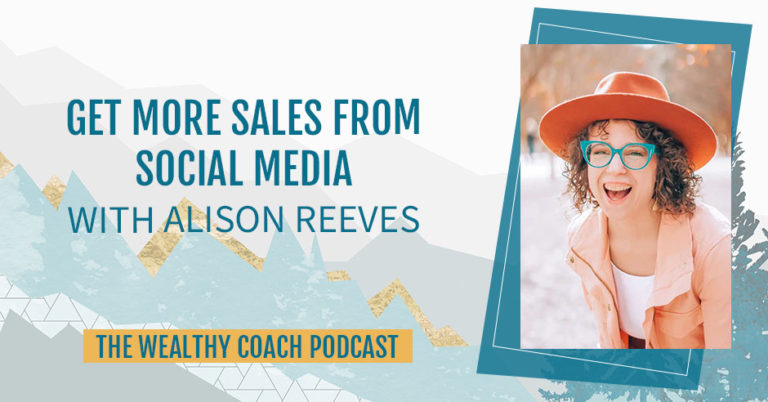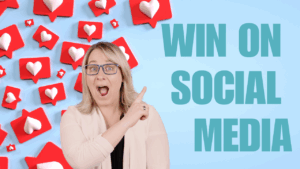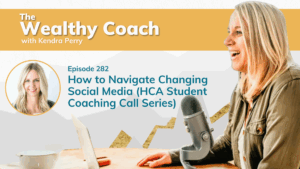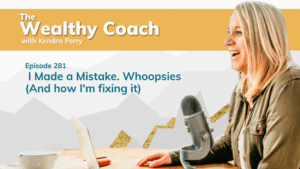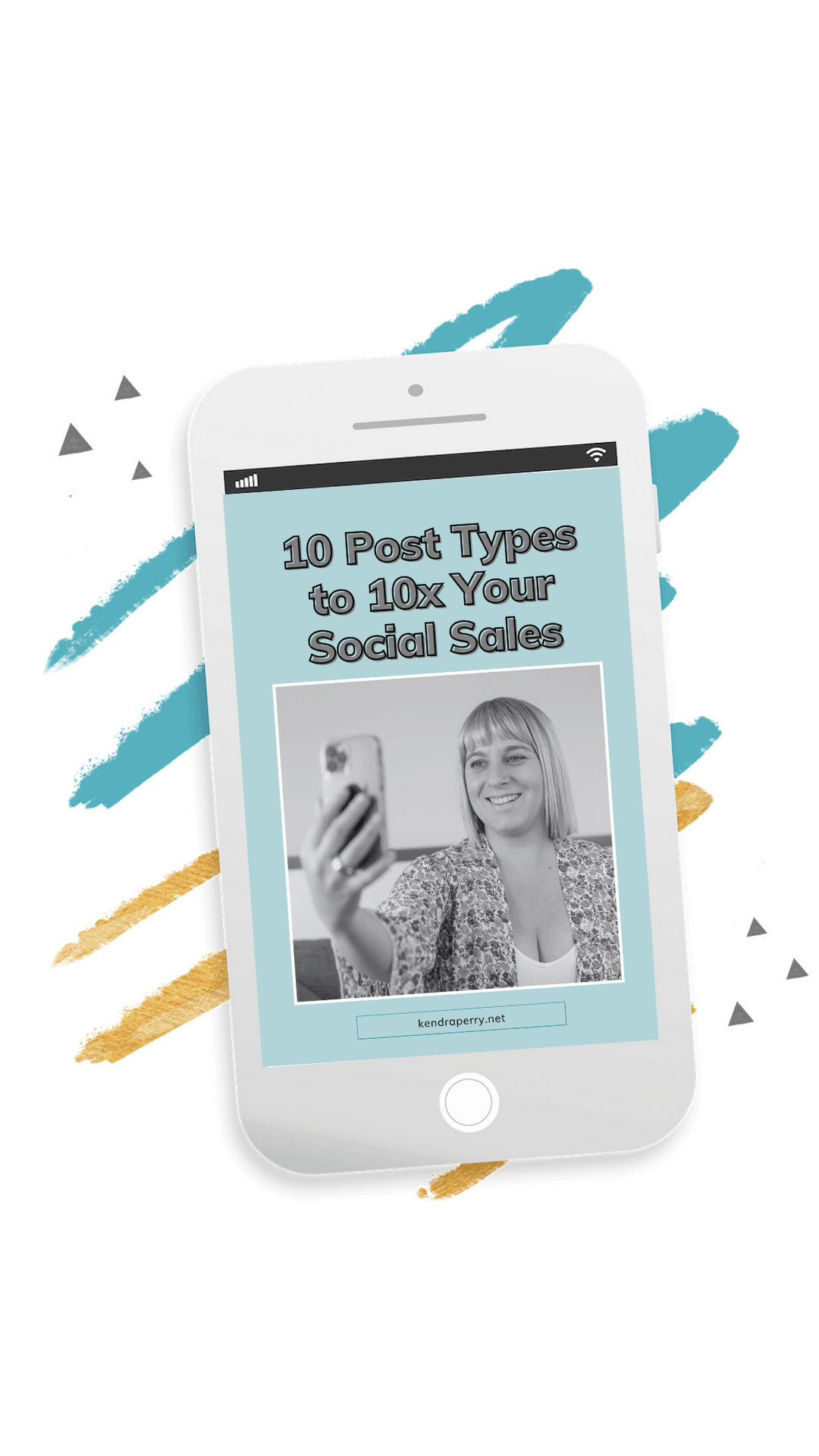In today’s era, almost everyone is into social media. Many people consume most of their time scrolling through their newsfeeds or watching reels. You have to recognize the opportunity there and leverage it to increase your business sales. But is it really that simple? Do posting and creating random content on your social media platforms lead to a five-figure income month? In this episode, Alison Reeves shares how you can properly use social media to get more sales. You need to understand that you need to know people’s common mistakes when they go that route. Then, it’s the perfect time to move forward and execute the right marketing strategies for your business.
—
Listen to the podcast here
Get More Sales From Social Media With Alison Reeves
I have an amazing guest interview for you. We are going to be talking to Alison Reeves, who has a very interesting story and I have connected with. I was interviewed on her podcast and then she came on my show. She’s one of those people where you meet them and you are like, “We are going to be friends.” We are going to talk about all things selling on social media.
I know a lot of you feel a bit weird selling on social, either you feel awkward and you don’t want to bug people, so maybe you avoid trying to promote and sell your things on social media or perhaps you are on the other end where you are overpromoting or promoting too much on social media. Neither situation is desired. You don’t want to promote constantly or wear out your audience and they stop listening.
If you never promote, then your audience does not know that you have a program. How are they ever supposed to sign up for it? Here’s a little bit more about Alison. She has been blogging since 2011 and coaching since 2017. She helps content creators monetize their expertise with a practical but heart-centered approach.
Her first blog, which was sold in 2021, reached over two million monthly impressions on Pinterest. She has helped thousands of entrepreneurs internationally grow their visibility, build communities, and create and sell their offers. In short, she connects the dots from ideas to making money once and for all. I’m excited to have this very honest, authentic, and candid conversation with Alison. Let’s waste no more time and dive into the interview.
—
Alison, welcome to the show.
Thank you so much for having me. I’m excited to chat with you again.
Before we dive into social media and selling on social, which is a super hot topic for the audience, can you let our readers know how you’ve got to where you are now? It sounds like you were a big deal in the blogging community.
I have fallen forward since 2017. I started blogging in 2011 to sell paintings of all things. I did not know how to do passive income but that propelled my career in marketing where people are like, “She knows how to blog.” I kept getting hired for things that I was unqualified for but I figured it out. Fast forward, I ended up being a Marketing Manager at several different web-based service companies and other in-person service-based companies. I learned about SEO, digital marketing, paid advertising, and then how I’ve got into what I’m doing now specifically. I was working for a lot of multimillion-dollar entrepreneurs. One was an eight-figure entrepreneur.
My husband got laid off in 2017. I remember I was so pissed because I feel like everybody was telling me how much I’m worth and nobody is paying me even what the market says I’m worth. No one is going to pay me what I’m going to pay myself. I’ve got mad enough to finally be like, “I’m going to pave my way.” That’s why I started coaching. At the time, I was working for real estate investors.
I decided to do marketing coaching for real estate agents. I was coaching them on how to blog and do SEO. In 2018, I finally made my blog income passive and started coaching. Rather than focusing on real estate agents, I started focusing on women entrepreneurs, most of whom were content creators because I’m a content creator. That’s the short version of the long story.
Your blog reached over two million monthly impressions on Pinterest.
Pinterest is amazing. It has changed a lot. Back in those days, there was a high-volume process for pinning that was a guaranteed way to hack the system but it still required you to create a ton of pins. I created a new process that I call the Pin Series to give the pins extra SEO meaning to Pinterest in a very short period. I used to be able to pretty much guarantee that people’s pins would go viral.
The algorithm has changed since then. I still use a similar process. The benefit to it is it’s a minimalist process for staying on top of Pinterest. The downside is it’s not a guaranteed multimillion-dollar impression. I had a ton of bloggers back then qualify for Mediavine, which is a high-paying ad provider by reswizzling their Pinterest process.
Pinterest is such an interesting platform. I had someone working on it consistently for a while and now I’m looking for someone else. I found it easier to grow than a lot of other platforms.
Coaches tend to not prioritize it because they are like, “I don’t want to be a blogger.” Pinterest is a reliable way for coaches to grow their email lists. At the end of the day, you know this because you run a lot of paid ads, paid ads are not the whole thing. You need to be able to decrease your advertising expenses by having leads coming organically. That’s one of the things that Pinterest can do for you.

Let’s start talking about our topic of selling on social media. Are there any clear mistakes that people make when trying to promote their things on social media?
There are many. The biggest mistake when people try to promote their stuff on social media is making it about them. Coaches are a little better about this than content creators in general. For example, one popular way to announce that you have a new piece of content is to say, “I have a new piece of content.” It’s too centered on you. What I say to people when you are leveraging social media for sales is you always have to start with an outward focus. An outward focus has to be either about the person you are writing to or it has to be something interesting about you that makes them want the juicy details.
An example of this is instead of saying, “I have a new podcast episode,” you want to have the first four lines of that post be interesting and story-driven about the avatar or say something juicy about you like, “Here’s one thing that my ex used to say,” or something where people are like, “I have got to know the details.” That’s the biggest mistake I see people making even among people who are seasoned content creators and big seven-figure coaches. I see them making some common social media mistakes like that. Your content always has an outward focus.
That’s important. When people start businesses, they are like, “It’s my business. It’s my passion. What do I feel inspired to share?” It’s your business but your business is not about you. If you can’t connect with your audience, they don’t give a crap that you love your business.
It has to be about their story and your story too, not just what you are selling. The other mistake I see people making is, “I use my personal Facebook profile for a lot of my marketing,” which you “should not” be using your personal Facebook profile for sales because Facebook does not want you to use your personal profile for sales. If you are marketing in the right way, it does not feel like a sales pitch all the time. Leading in that story-driven way is a good way to expand your reach and not violate Facebook’s Terms of Service by using your personal profile.
Your first mistake is too much about you and not enough about the avatar’s ideal client. What’s another big mistake that people are making?
People don’t ask for the sale or don’t have enough calls to action. You talk all the time about choosing a niche. I love what you said. I was reading a post of yours. A niche is not about pigeonholing yourself. It’s about communicating. You have to do the same thing with your content. Once you choose your niche and what you are about, your content always has to focus on that.
I had a client who was amazing. She would tell me, “I’m good at sales. I don’t feel shy about sales at all.” Yet she was not getting any sales. I look at her content. She was sharing a lot of valuable content that was other people’s content or stories that were personal stories that ended with a question or a sentence that was not engaging.
Your content has to be geared around what you want people to do. Sara Dann teaches this. She’s another business coach. She has a framework that she calls the Give-Ask Framework. Every day, you give value and ask for something from your audience. Maybe that’s the simplest way to get my point across with this mistake. You need to be making sure to ask your audience what you want them to take every day. That could be signing up for free training, signing up for your email list, following, saving a post on Instagram, buying the thing or booking a call.
That’s important because a lot of people can fall into two categories where either they are never pitching on social media and mentioning their program or they are the annoying MLM marketer who treats cold leads like hot leads. They are in your DMs like, “Don’t you want my face cream?” You are like, “Who are you? What are you doing here?” I see that all the time. We don’t want to be that pushy promotional person because there’s no value in that. That does turn people away and exhaust people. If people don’t even know you have a program because you never talk about it, that’s a bit of a problem.
I did this one launch. It was the summer of 2019. It was what I called at the time a “failed launch.” I did get some sales. I’ve only got one sale for the actual program that was selling. Maybe 1 or 2 months after that failed launch, I went back through my social media to look at the content second and repurpose it. I did not know what the hell I was talking about. My content was all over the place. I hardly ever asked for a sale or a sales call. I was like, “I felt like I was talking about it all the time.” In my actual content, I did not even have a post every day going out.
People, especially my audience, are like, “I don’t want to bother people and come across in a certain way.” You want to be the biggest ambassador for your program. You should be mentioning your program at least every day. It does not have to be direct or forceful. It’s not like, “Buy my thing.” It can be as simple as this. Let’s say you are doing content about exercise and you are like, “An exercise is something that I drill down with my students inside this program.” You can constantly be seeding it in because you want to associate yourself with your program. What are some other mistakes that they are making?
One of the things you and I talked about was my first five-figure month when I had a group of only 300 people. When you are talking about selling to a small audience, there are four pillars you want to address. We have addressed a lot of them in these other mistakes we have talked about. One is having good content. When I say good content, I’m talking about content that is focused on getting what you want to ask for.
It’s getting the sale, getting people to sign up for the class or in the DMs. It’s having good content that’s focused on what your avatar wants. When you are posting in your feed and Reels especially, your feed and your Reels need to all be niche content. Your stories can be whatever. Your Reels and your feed are what draw new people. That all needs to be niche content. The next thing we alluded to is that engagement. When I say, “Everything you post needs to have an outward focus,” I’m talking about how we make it interesting to people who may never buy from you.
We want to have it geared around the niche, and then it needs to be interesting even if people are not ready to buy so that they can keep seeing your posts. The third mistake I see people making is they wait for the traffic. This is the biggest problem that smaller influencers or coaches face. It’s like, “I’m posting and nobody is commenting.” Pinterest is great because you can have this massive visibility growing on the backend.
The great thing about high-ticket sales is that you need very little visibility to have your first five-figure month. One of the things that I try to encourage people to do is to curate their visibility. Don’t wait for a bit. Intentionally, go after it. On Instagram, that looks like outreach and commenting on other people’s posts, looking at the hashtags, and sending DMs. If you are going to do outreach via DMs, the way is to not do it like an MLMer. I know some great MLM entrepreneurs.
There are some good ones. There are just a few that have made a bad name for their industry.

We all know what you are talking about. None of us are wondering what you are talking about. We all know that vibe. The way to come across in the DMs in a genuine way is to come into the DMs with a genuine interest and intrigue about the person like a doctor diagnosing a problem. I’m going to start by building a relationship. It might be like, “How are you? Thanks for liking my post. How are X, Y, and Z going?” People feel uncomfortable about this outreach component.
I don’t know how people respond to it on Instagram versus Facebook because I work primarily on Facebook. On Instagram, I don’t DM as much as far as outreach is concerned. I mostly do comments and hashtags. It’s a good way to increase your visibility without waiting for the algorithm to catch up. Starting conversations where people are responding to you can help your post to be seen by more people on both Instagram and Facebook.
I feel like we speak the same language because of what you said initially where people are posting and they are like, “No one is doing anything.” I call it posting and boasting. They think they just post and things are going to happen. The engagement side of things when you are new is more important because the algorithm is always going to reward people who use the platform.
I love what you are saying about direct messages because I have my students do this on Instagram as well. You have to go find your clients and start conversations with them. It’s that genuine interest. You are not trying to pitch. You are like, “I noticed you followed me. We have the same dog. What’s your dog’s name?” It’s starting up a conversation. It’s that small talk you do at a networking event before the times of the internet land.
The more you do that, the more you get a sense of what your person looks like and what account they have. There are some people that I work with who have way more followers than me and who have hardly any followers. I know the look that they have when they need the things that I teach about. The other thing that relates to this is that early on when I started doing high-ticket coaching, I would take a sales call for anything or a $300 course because I learned so much about people.
I do not think that sales calls are required for high-ticket sales. We call them strategy calls because, in some of them, you are not going to be selling. The more strategy calls you are willing to take, the faster you are going to learn about what’s special about you and what your avatar needs from you as opposed to what they need for maybe somebody else.
That is important. I also teach my students to do sales calls. It’s true. You can learn so much about your person and what they need because a lot of people hear, “You’ve got to speak to your ideal clients, meet your ideal client, and get to know them. What are their desires?” A lot of people are like, “How do I get to know this person?” You talk to them.
You have to have conversations. It could be a market research conversation. I did not do any structured market research conversations in my coaching business until 2022. I did it because I had a new coach who wanted me to do something a specific way. Before that, my market research was just having conversations. There are people who are introverts. I’m a little bit of an introvert. You have to know that the amount of conversations you are having early on in your business does not have to always be that way. The more you learn about your avatar, the better you get at your marketing, and the less you have to have this outreach energy on the internet.
It’s a very good early strategy. Once you get to a certain point, things are working in your favor, and you have good engagement, you don’t have to do those strategies. I have 8,500 or something Instagram followers. I still try to welcome all new followers to my account and strike up a conversation as much as I can. I don’t always get to it but I still make it a priority because I feel like if we have a conversation in the DMs, it’s starting that relationship right off the bat on a good foot and building that relationship.
I don’t welcome new members and followers via DMs but I welcome every single Facebook group member that I have. That’s probably something I should do. It’s to welcome all new followers to say, “Hey.” I never even thought about that but I’m talking about DMs, outreach, and curating visibility. I don’t send hardly any DMs. I’m like, “I’m learning things.” I should do that.
Sometimes things are so obvious we don’t pick them up. What I do is like, “Thanks for the follow.” I introduce myself. I want to make it clear. It’s always important to be transparent. This is especially true with coaches who are helping in the business-to-consumer. You don’t want to pretend to not be a coach and be deceptive. You are like, “I’m just starting this conversation with you, and I’ve got the sales call.”
I feel like that’s weird. Be explicit off the bat. I’m always like, “I’m Kendra. I’m a business mentor for health and wellness coaches.” I always ask them, “If you don’t mind me asking, how did you come across my profile?” It’s a very non-threatening conversation. It’s not salesy. I generally want to know the answer to that. If they tell me, then it’s good to know where they came from.
I’m sure Instagram is the same way that Facebook is where after you have that DM exchange, it helps people to see more of your posts because the platform is like, “These people have engaged.” If you are messaging people and they are not responding, that’s not going to be good. If that’s the only conversation that happened and then it ends there, it still provides so much value for you because you have had this exchange now.
It’s important too because we are talking to health coaches. They are talking about sensitive content on the internet. If you are nichey in periods, diarrhea, and rashes, people don’t want to comment in a public forum and be like, “My explosive diarrhea is bad.” It’s embarrassing. Health stuff is sensitive. People don’t always want to talk about it to everyone. If you can set the precedent right up front that you are available in the DMs and it’s a non-threatening space and you are there for them, that’s where a lot of your engagement will come from.
Your post was so good. You are like, “Your clients don’t want to talk about their diarrhea on your Instagram post.”

It can affect engagement and engagement is important. Sometimes people get caught up on engagement and I’m like, “Engagement is great but you need clients, not engagement.” You can have mediocre engagement and still get clients. When you had that big five-figure launch with 300 people in your Facebook group, what do you think was the most important thing that led to that outcome?
It’s everything we are talking about. There are two things specifically. One was in April or May of 2019. This five-figure launch happened in August 2019. I had been coaching real estate agents before this point and decided in February of 2019 to pivot to women entrepreneurs, primarily other bloggers, and content creators. I don’t remember how I pivoted. I did what I call a Coming Out series. It was 2 or 3 posts on my personal Facebook profile where I launched a course called Digital Marketing Quickstart.
It was $125. I told people how to leverage your website and social media to get leads and then nurture people. I was doing things for artists and bloggers. There were thirteen people that joined that program at $125. I was astounded. That was such a huge win. I was thinking about limiting the program to two people. My coach was like, “Why? That’s so dumb.” I have thirteen people sign up for it. After that program was finished, I pitched one-on-one coaching. I’ve got two clients from that.
I used that momentum to launch a Facebook group and got 100 people in the Facebook group. Slowly, I was adding people to the group throughout the year. All during that time, I would take a sales call for anything if I thought that somebody could utilize me but I still knew they were not ready. Now I truly don’t have as much time to talk to anyone. I would talk to anybody and say, “It’s okay if you want to buy anything from me. I want to ask you a couple of questions and give you an idea of how I can maybe help someday.” A lot of those people ended up buying.
When the launch came around in August 2019, I had all of that momentum building throughout the year, including that failed launch. This is another thing that I’m sure you tell people and I tell my clients all the time. Your “failed launch” still serves a purpose because I’ve got a couple of coaching clients during that launch. In the $600 program, I only sold one but I’ve still got at least one other $3,000 client. That launch still built up a lot of visibility. A lot of people joined the group, came to the training, and got on sales calls. It did not sell that well. I knew after the launch why it did not sell. I did not know during the launch.
When August came around, it had been a couple of months since I launched but I had a lot of momentum. I was showing up in the group and messaging people who joined the group all the time. It’s because I have been having so many conversations that I had a better idea of what a program would look like that people needed. My mistake with my launch in June is I was trying to make it a more robust version of that first baby launch that I had or that $125 program. People were not clear enough on how it was differentiated. That was very clear when I launched it again.
I launched the signature offer that I still sell. I was launching a program called Sexy Marketing for Awkward Entrepreneurs. This is still true of MAP, which is that signature program. Clients love creating content. They are creative. They put themselves out there but they hate marketing and sales. They feel so uncomfortable with it. That’s what that program was. We did a stupid photoshoot for it. The course is only $300 but I had a lot of people upgrade to one-on-one coaching. That’s what led it to be the five-figure launch. We did $14,000 in sales with 300 people.
It’s so important because a lot of my audience has smaller followings. People think they need a lot more. It’s not about numbers. People get caught up on vanity metrics. It’s about the quality. It’s much better to have 300 quality people who care about what you do versus 1,000 people who are like, “I don’t know who she is and I don’t care.”
I have had multiple of my clients who had a five-figure month in their first month working with me. What’s important about my story is that does not always happen. I pivoted my niche and started from scratch in February, March or April of 2019. I didn’t have that five-figure month until August or September of 2019. I was also still working a full-time job. I went part-time that year. I was not on my own yet full-time.
I also had a very similar experience with a failed launch that was a super fetal-position-on-the-bathroom-floor-crying type of launch.
I want to know this story.
It was the first time I ever tried to launch a course. My niche was not clear enough and I did not understand the difference between what your audience wants versus what I know they need. I launched this course that gave them what they needed and not necessarily what they wanted. It was not clear enough. I was working with a coach at the time who had helped me but she had gotten busy. She was not giving me the attention anymore because she was like, “Go ahead. That will be good.” Looking back, I’m like, “That was not good and she would have known that.”
I don’t think I had maybe the best mentorship at the time. I had this webinar launch. I pumped a bunch of money into Facebook ads and had a Facebook ad that went fairly viral. I had hundreds of people show up for this first webinar. I was like, “I’m going to be rich. This is crazy.” I didn’t make a sale. It had not occurred to me that it would happen. I was like, “I’m going to make $15,000. I would post this with $15,000 all around me and all over my office.” I was manifesting. I was like, “I don’t understand.”
I launched it three more times and managed to get maybe 2 or 3 people to enroll in the course. I was like, “This is not working.” I’ve got a lot of visibility from that launch. Once I healed, I was able to go back and be like, “Why did this not work?” I launched another program about six months later that ended up generating $7,500, which at the time was the most money I had ever made. I did start doing six figures in my business shortly after. I agree with you. The success of the first launch is in doing it.
It’s a long game. If this were easy, everybody would do it, and if it was like, “I’m going to create a course, start a webinar, and become a millionaire.” Sometimes that happens but it’s very rare. You have to get through some stuff and some trial and error. As soon as you hit it out of the park, sometimes you’ve got to try again.

Everything is a learning experience. We have to be willing to be like, “That did not go as planned. What did I do wrong? How can I learn? How can I improve?” It’s valuable. You have to look at it like an objective scientist rather than someone who’s emotionally wound up in their business. Every time something goes wrong, that means that they suck, horrible, not worthy, and all of that. You have a free gift for the audience. You have a masterclass. Can you tell us a little bit about that?
I’m a business and marketing coach. I mostly work with content creators. You have to sell people what they want and then give them what they need. What a lot of my clients want and what they get are the practical strategies of aligning your messaging, growing an audience, building an email list, growing your organic traffic, and then doing launches and sales. What people need that a lot of times they don’t know they need is mindset work.
A lot of times, they don’t know that they are self-sabotaging. That’s why they keep missing their goals over and over again or why they keep stacking their plans on top of each other and giving up on themselves. The masterclass is called the Anxious to Abundant Masterclass. I teach my Abundance Attraction Framework. It’s not just about, “Discover your limiting beliefs, and then write some affirmations,” which is a very foundationally important part of mindset work.
It’s about that next level of mindset work on, “I had a $10,000 a month. The next month, I made $0. Why did that happen? I had a $10,000 a month or I’ve got my first coaching client but I’m always afraid the other shoe is going to drop. I finally was able to get to a full-time income but I feel frantic all the time. When am I going to like my life again?” This is the framework that solves those kinds of problems. The link is AlisonReeves.co/abundance-masterclass.
I love that because the mindset is so key. New business owners have no idea. They are like, “I need to learn business strategy.” All of a sudden, they feel bad about their body and they don’t know why.
This is the stuff that I wish I knew. In 2021, I had two multiple six-figure years in a row, which I was proud of but never celebrated. In 2021, I went into a depression that I could not get out of it. All of the stuff in that masterclass is part of what came out of that healing workaround, “Something is missing. I made some money but now I hate everything. Why?” If you stay at the end of the masterclass, there are two gifts worth $1,000. I tell you at the beginning of the class, “Stay to the end because it gets good at the end.”
How can people connect with you if they want to stalk you online?
You can go to AlisonReeves.co. I’m @AlisonReevesCo everywhere, TikTok, Instagram, and Facebook.
Thank you so much for hanging out with me. I appreciate it.
I loved chatting with you.
It has been fun. Thank you, everyone, for reading. I will see you again with another great episode at the same time and place where I help you become wealthy AF.
Important Links
- AlisonReeves.co
- Mediavine
- Sara Dann
- MAP
- AlisonReeves.co/abundance-masterclass
- @AlisonReevesCo – TikTok
- Instagram – Alison Reeves
- Facebook – Alison Reeves
About Alison Reeves
 Blogging since 2011, and coaching since 2017, Alison Reeves helps content creators monetize their expertise with a practical but heart-centered approach. Her first blog, which was sold in 2021, reached over two million monthly impressions on Pinterest; and she’s helped thousands of entrepreneurs internationally grow their visibility, build communities, and create and actually sell their own offers. In short: Alison connects the dots from ideas to actually making money – once and for all.
Blogging since 2011, and coaching since 2017, Alison Reeves helps content creators monetize their expertise with a practical but heart-centered approach. Her first blog, which was sold in 2021, reached over two million monthly impressions on Pinterest; and she’s helped thousands of entrepreneurs internationally grow their visibility, build communities, and create and actually sell their own offers. In short: Alison connects the dots from ideas to actually making money – once and for all.
